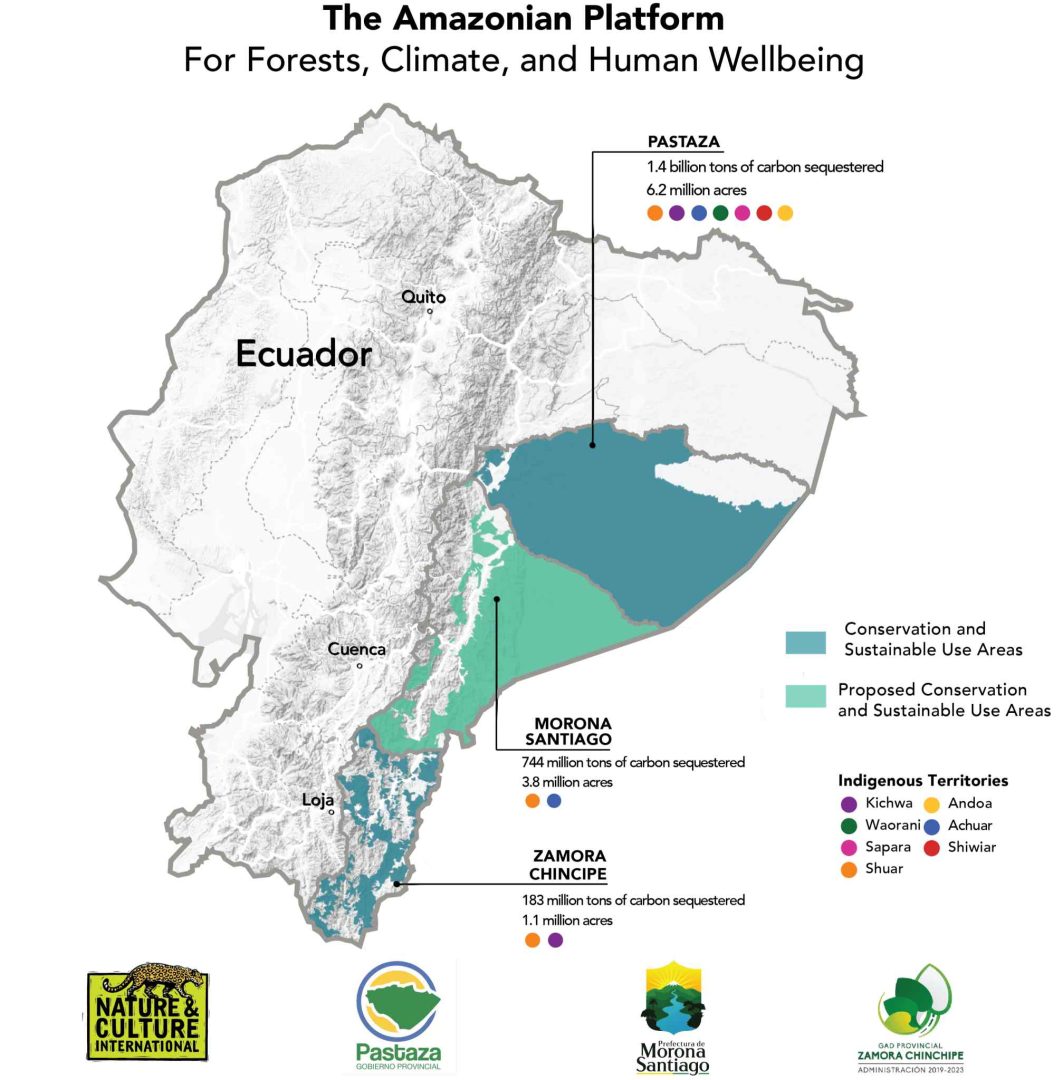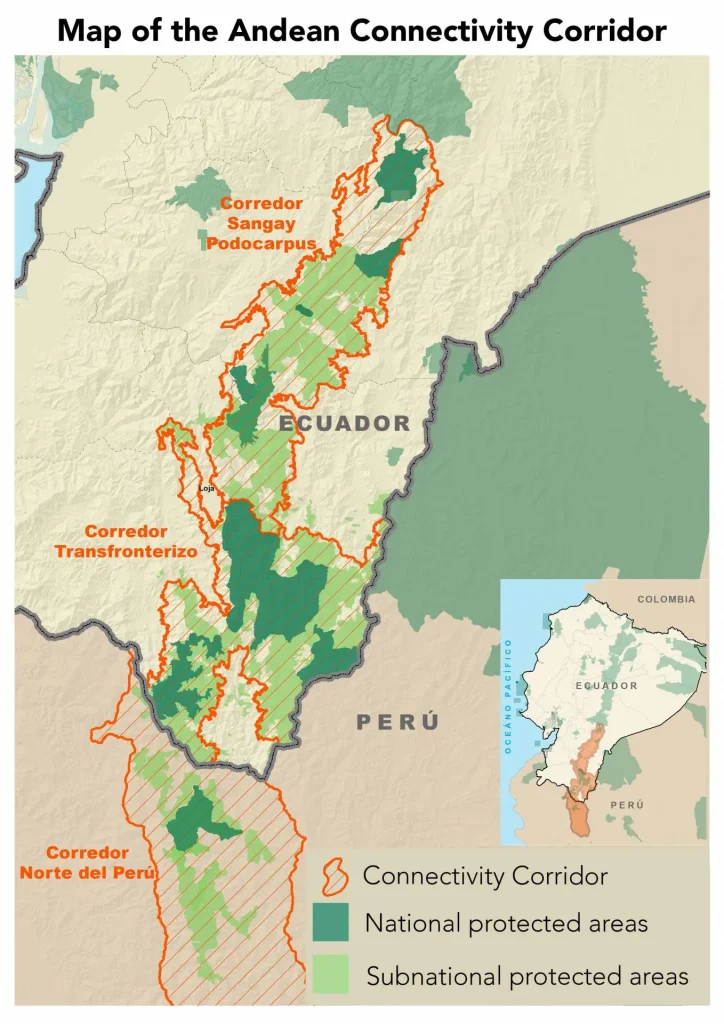Explore our work and make an impact
Protecting large landscapes, mitigating climate change, fighting deforestation, providing sustainable livelihoods, and preserving cultural heritage.
Building the Amazonian Platform
Bringing local governments and indigenous nationalities together to create over 11 million acres of continuous, protected forest in the Ecuadorian Amazon.
The Amazonian Platform spans 3 Ecuadorian provinces– Pastaza, Morona Santiago, and Zamora Chinchipe, and creates a collaborative agreement between the governors of the Ecuadorian Amazon and Indigenous nationalities that live within these areas to protect a largely intact section of dense Amazonian forest.
Threats to the Ecuadorian Amazon from deforestation, mining, agricultural expansion, and development increase daily, and this union promotes strategies that reduce CO2 emissions from deforestation and forest degradation and incorporates Indigenous ancestral practices to sustainably manage and protect over 11 million acres, making up the largest biological corridor of continuous forest in Ecuador.
Connecting the Andean Corridor
Creating a cross-border, continuous, protected corridor down the spine of the Andes Mountain range.
Spanning 236 miles and two countries, the Andean Corridor project will protect one of the most biologically diverse places on our planet. This global hotspot contains about one-sixth of all plant life in the world and contains the largest variety of amphibian, bird, and mammal species. These areas include rich cloud forests and paramo grasslands that are home to far-ranging endangered species such as the spectacled bear (Tremarctos ornatus) and mountain tapir (Tapirus pinchaque). This area also safeguards 72 water sources that support over 250,000 people.
To date, Nature and Culture has successfully established over one million acres of reserves within the corridor. With financial support, this project could additionally protect almost 5 million acres of key ecosystems and diverse habitats. These ecosystems help to regulate the natural cycles that produce and renew the planet’s air, water, and climate.
Protecting Key Water Sources
Water connects people to conservation.
Access to clean water is a basic human necessity and preserving important water sources is a powerful tool for encouraging overall ecosystem health. Nature and Culture leverages local interest in preserving access to clean, abundant water to drive conservation. Ultimately this leads to the preservation of local biodiversity, nearby forests, ecosystems, and food security for local populations.
In Ecuador, a Water Protection Area (WPA) is a nationally recognized, legally protected territory that conserves these precious water sources.
We have helped identify and protect areas of hydric importance and in Ecuador, government and Indigenous leaders are involved in a dialog to prioritize the protection of water sources, using the map we’ve created to spark conversation.
Cuenca del Mayo – Mexico
A 220-mile corridor that connects four federally protected areas.
Nowhere else in the world can you find both wolves and jaguars in the same ecosystem. The window is closing to protect this vanishing ecosystem, yet the opportunity to conserve at a large scale still exists. Located in Alamos, Mexico, Cuenca del Mayo is an area in the northernmost region of the tropics and is one of Earth’s most unique ecosystems. We’re working to protect Cuenca del Mayo, in partnership with Rainforest Trust, and we aim to create a permanent contiguous habitat connecting existing Nature and Culture reserves around Alamos with four federally protected areas to the northeast.
In total, these connected areas will span 220 miles and 4.5 million acres. The corridor will be used by a wide range of national-level endangered species like the jaguar, migratory global endangered species like the thick-billed parrot, and endemic endangered species like the lilac crowned amazon.






